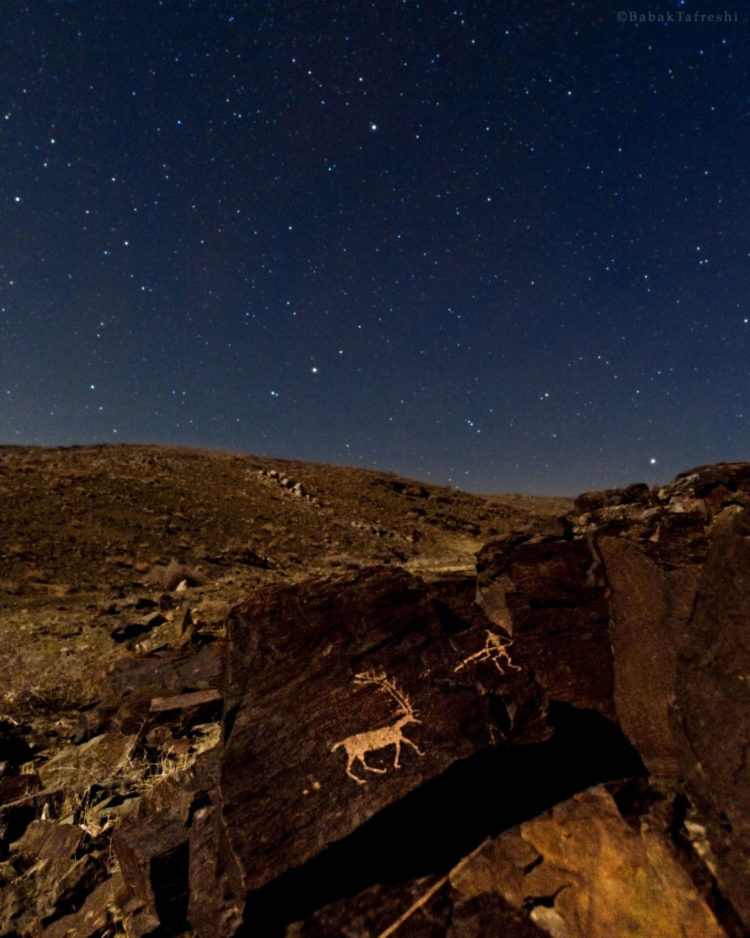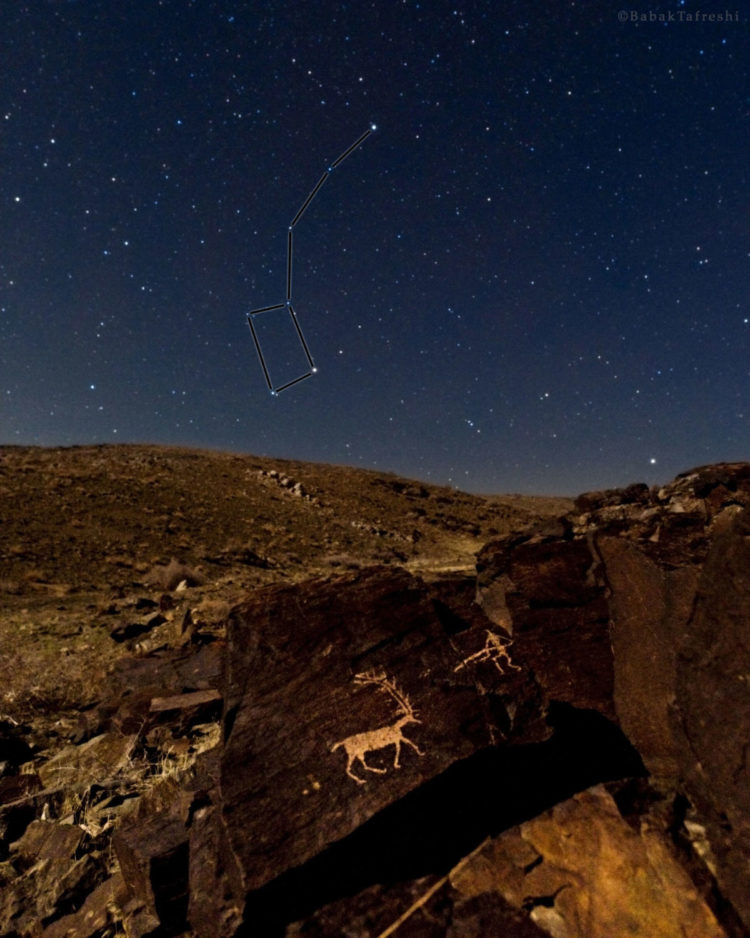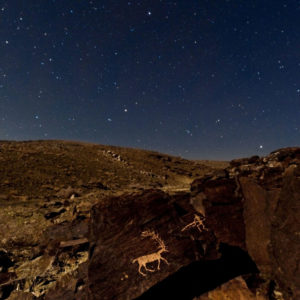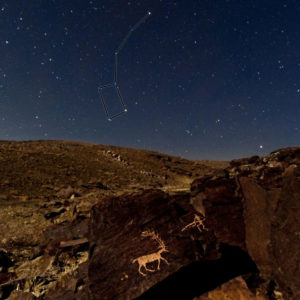Hunting Petroglyph and Polaris
Description
A prehistoric petroglyph appears in moonlight, a hunting scene from more than 10,000 years ago in Teimareh (Teymareh) valley, central Iran. With thousands of petroglyph found in the area it is one of the world’s richest rock art sites, still largely unexplored.
The north star Polaris and the rest of constellation Ursa Minor, the Little Bear, appear in the sky (move the slider on the image). Polaris is the bright one at top, the handle of the Little Dipper. In a dark sky you easily see all 7 stars of the Little Dipper but under light polluted city skies a few of them remain visible. It’s remarkable that when this rock art was made, Polaris was not a north star at all. The celestial pole was almost 45 degrees away across the sky near bright star Vega. This is due to the Earth’s precession, the slow wobble of its rotation axis like a spinning top. It’s a very slow change with a cycle of 26,000 years. For spinning top this happens when it’s slowing down. For Earth it’s due to the tidal force by the gravity of the Moon and Sun.




comments (0)